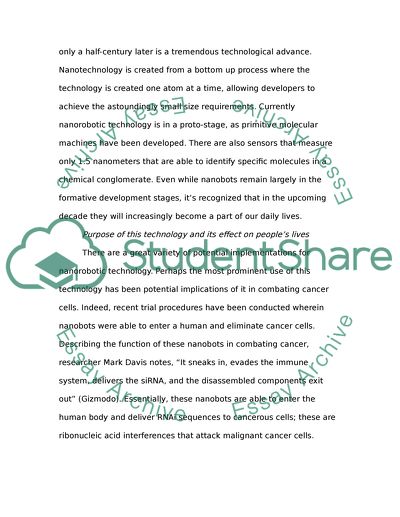Cite this document
(“Nanobots Research Paper Example | Topics and Well Written Essays - 1250 words”, n.d.)
Nanobots Research Paper Example | Topics and Well Written Essays - 1250 words. Retrieved from https://studentshare.org/design-technology/1440207-nanobots
Nanobots Research Paper Example | Topics and Well Written Essays - 1250 words. Retrieved from https://studentshare.org/design-technology/1440207-nanobots
(Nanobots Research Paper Example | Topics and Well Written Essays - 1250 Words)
Nanobots Research Paper Example | Topics and Well Written Essays - 1250 Words. https://studentshare.org/design-technology/1440207-nanobots.
Nanobots Research Paper Example | Topics and Well Written Essays - 1250 Words. https://studentshare.org/design-technology/1440207-nanobots.
“Nanobots Research Paper Example | Topics and Well Written Essays - 1250 Words”, n.d. https://studentshare.org/design-technology/1440207-nanobots.


